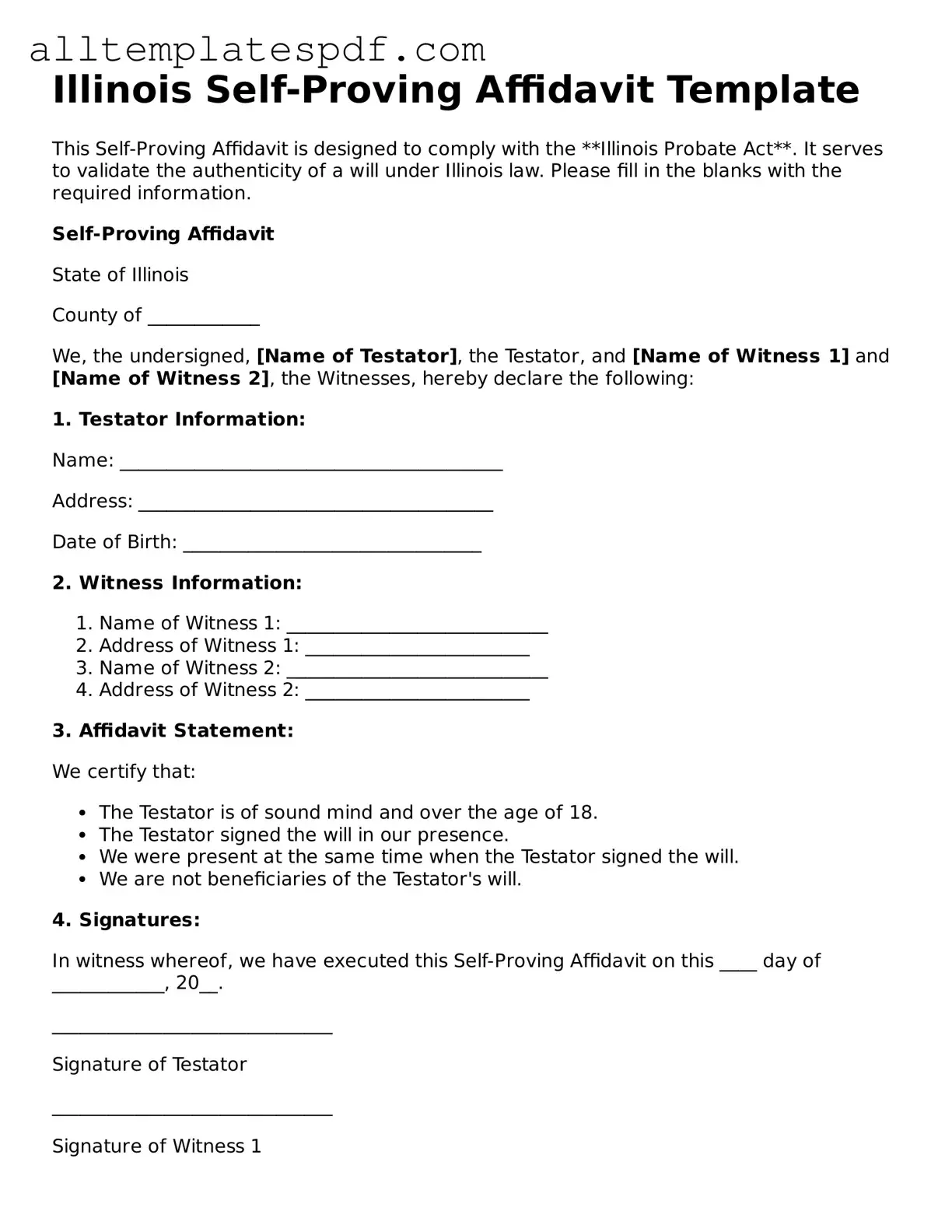Filling out the Illinois Self-Proving Affidavit form can seem straightforward, but many people make common mistakes that can lead to complications later. One frequent error is not having the required witnesses present when signing the affidavit. In Illinois, two witnesses must be present to validate the document. Without their signatures, the affidavit may not hold up in court.
Another mistake occurs when individuals fail to provide complete information about the testator. It’s essential to include the full name and address of the person whose will is being proven. Omitting this information can create confusion and may invalidate the affidavit.
Many people also overlook the importance of signing the affidavit in the correct order. The testator must sign first, followed by the witnesses. If this sequence is not followed, the affidavit may be deemed invalid. It’s crucial to understand that the order of signatures matters.
In addition, some individuals do not ensure that the affidavit is dated. A missing date can lead to questions about the timing of the will and the intentions of the testator. Always remember to include the date of signing to avoid any ambiguity.
Another common error is using the wrong version of the form. Illinois law may change, and using an outdated version of the Self-Proving Affidavit can result in problems. Always check for the most current form to ensure compliance with state requirements.
People sometimes forget to have the affidavit notarized. While witnesses are essential, notarization adds an extra layer of authenticity. A notary public can help confirm the identities of the signers, which can be vital if the will is ever contested.
Finally, some individuals fail to keep a copy of the completed affidavit with the will. Storing the affidavit separately can lead to confusion when the will is executed. Always keep the documents together to ensure they are easily accessible when needed.
